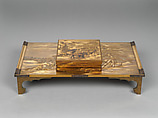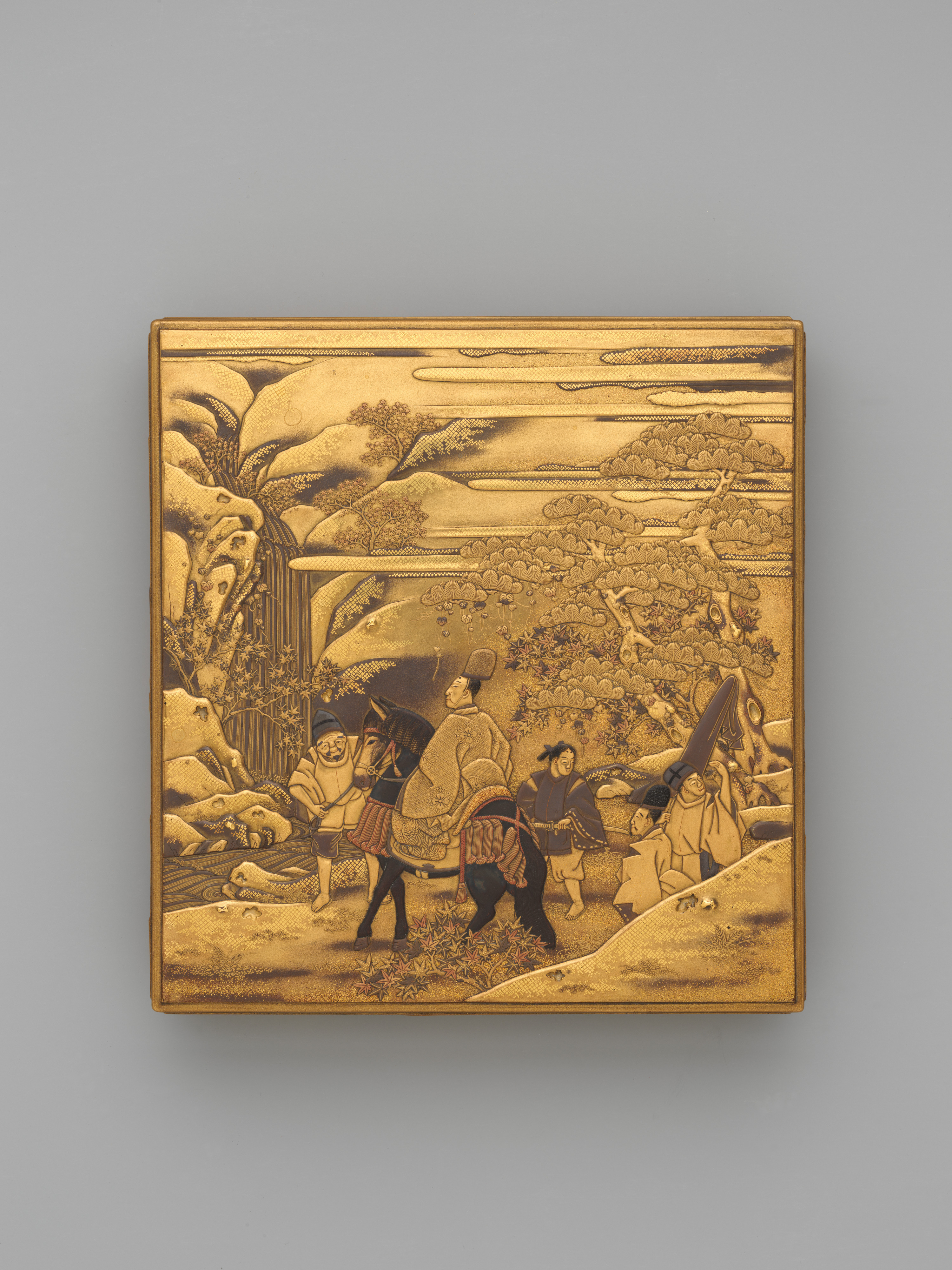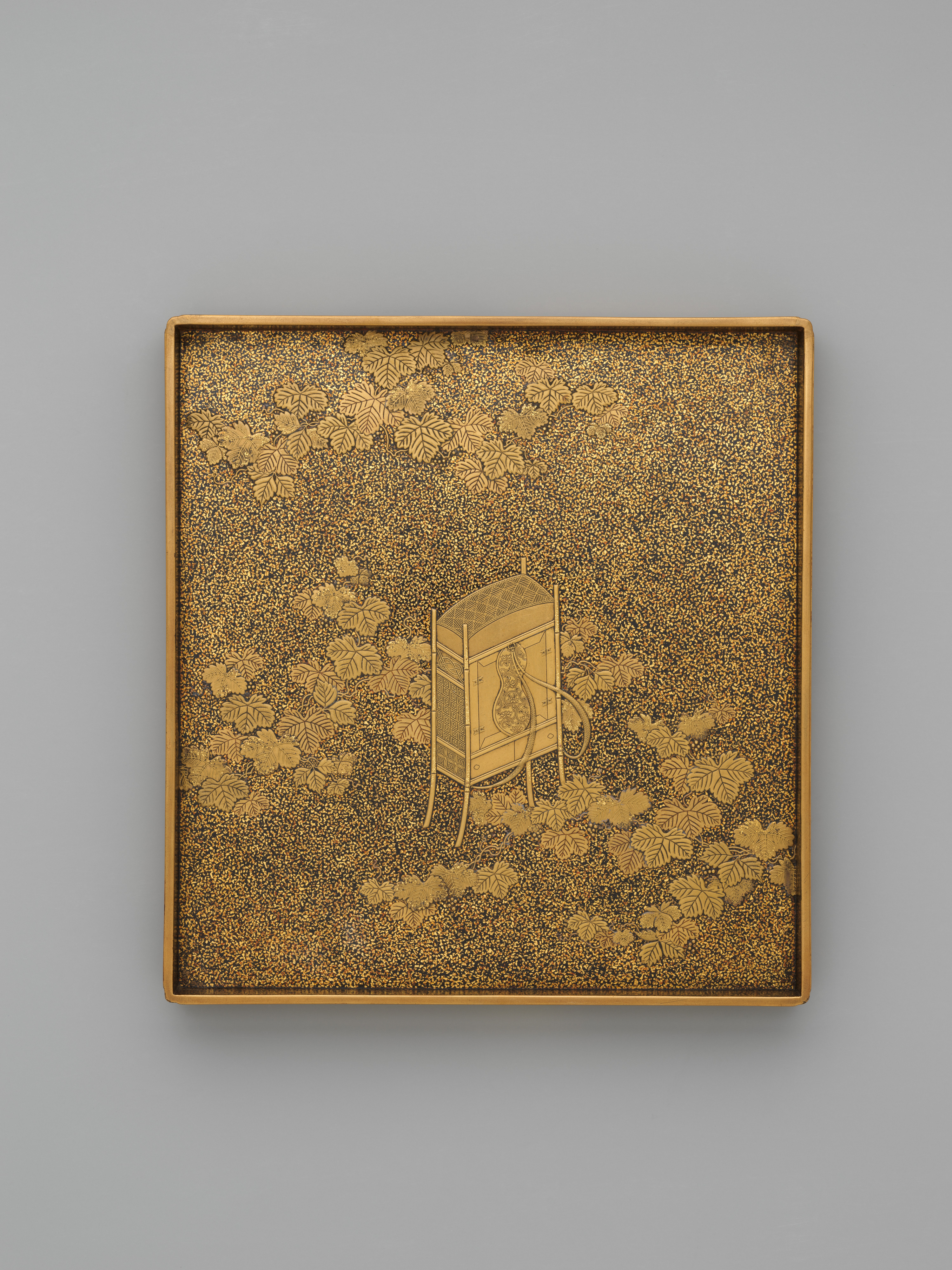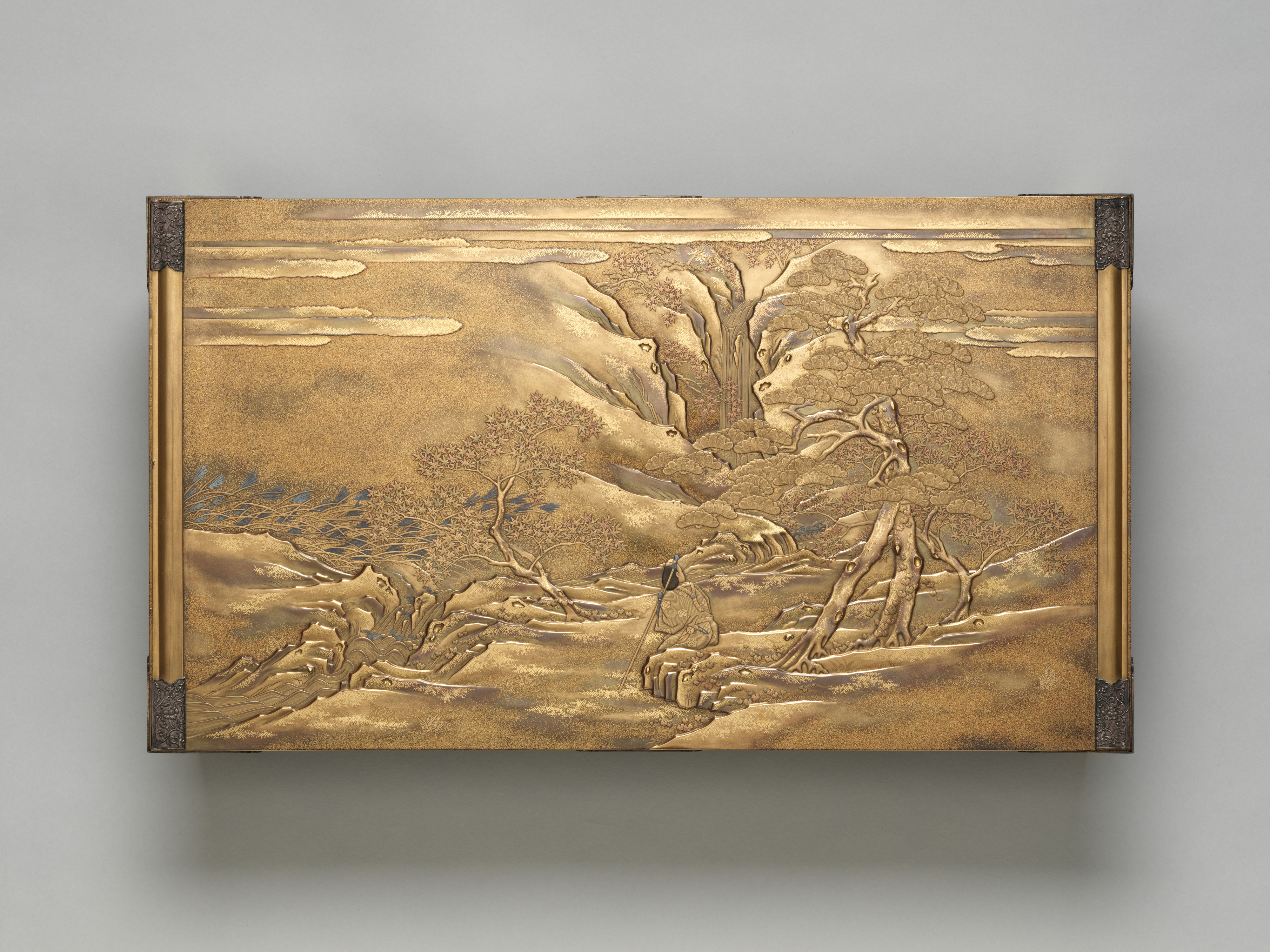Writing box and desk with scenes from The Tales of Ise (Ise monogatari)
Not on view
This early 20th-century set of a lacquer writing box (suzuribako) and a writing desk (bundai) follows Edo period traditions of depicting scenes from classics on writing utensils. The exterior of the lid of the writing box is embellished with rich maki-e decoration, including all major techniques, representing one of the most-well-known episodes from The Tales of Ise. Episode 87 is shown in a refined gold and silver composition, in which a group of noblemen visit Nunobiki Waterfall, near present-day Kobe. Nunobiki is one of the most famous and sacred waterfalls in Japan. Inspired by the beauty of the scenery, the noblemen composed poems about court ranks.
The interior of the lid and the inside of the writing box are embellished with patterns of symbolic meaning, such as a pilgrim’s wooden backpack, a letter, autumn ivy and maple leaves referencing the Mount Utsu scene from The Tales of Ise. Mount Utsu (literally, “mountain of sadness”) is actually a hill on the border between the Abe and Shida districts of Suruga Province (present day Shizuoka Prefecture), a famous spot on the Eastern Sea Road (Tōkaidō) associated with the autumn moon, ivy, and maples. In this scene the protagonist, while traveling up Mount Utsu along a narrow road overgrown with ivy and maples, meets a wandering ascetic pilgrim headed back towards the capital and entrusts him with a message for a lady there. The writing desk is also embellished with a view of the Nunobiki waterfall in the autumn scenery.
The Tales of Ise (Ise monogatari) is a collection of waka poems and associated narratives, dating from the Heian period (794–1185) and ranks with The Tale of Genji as one of Japan’s great literary classics. The current version consists of 125 sections, with each combining poems and prose, including a total of 209 poems. Most of the verses are love poems exchanged between the anonymous hero and various ladies whom he encounters.
Due to rights restrictions, this image cannot be enlarged, viewed at full screen, or downloaded.
This artwork is meant to be viewed from right to left. Scroll left to view more.








